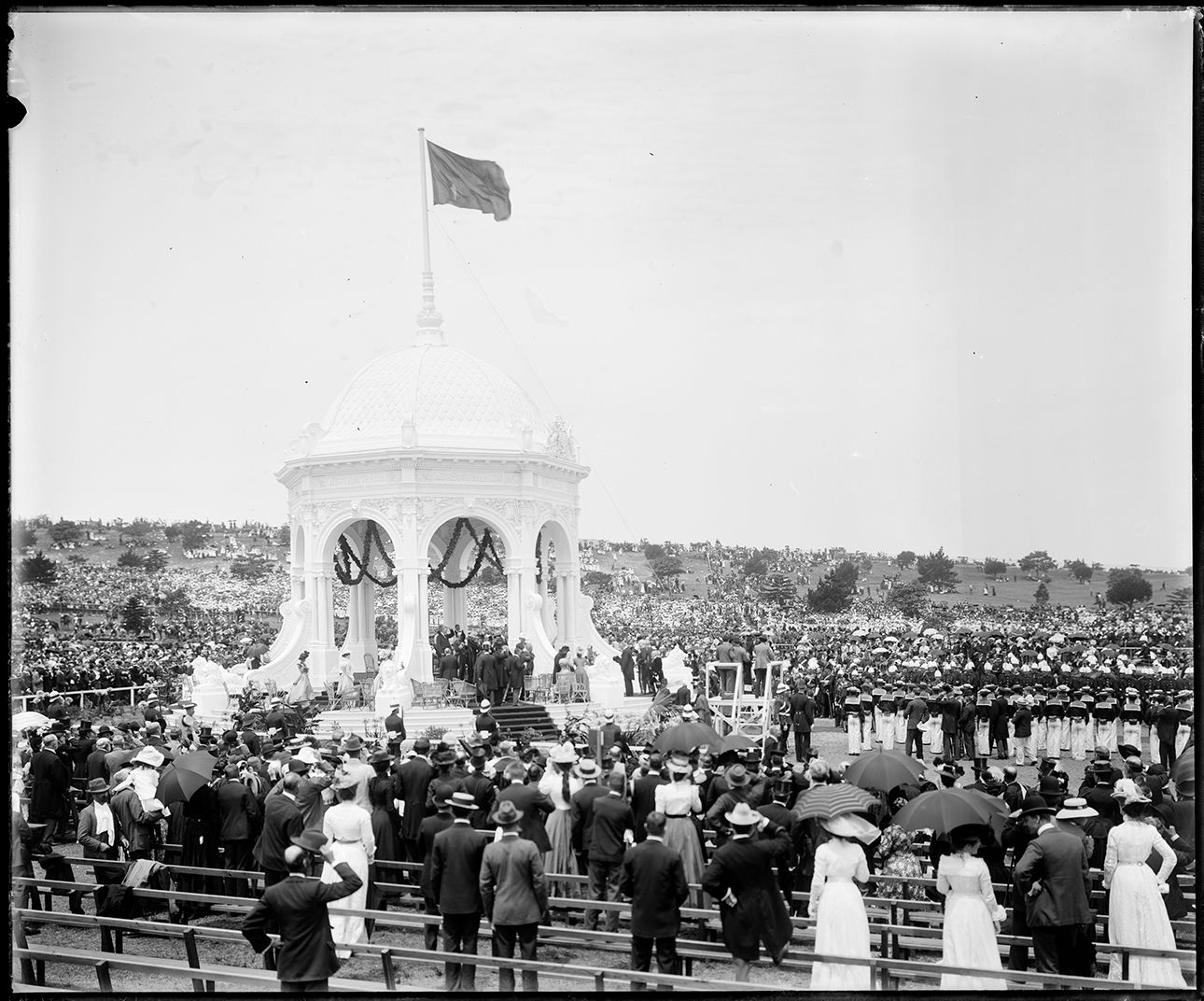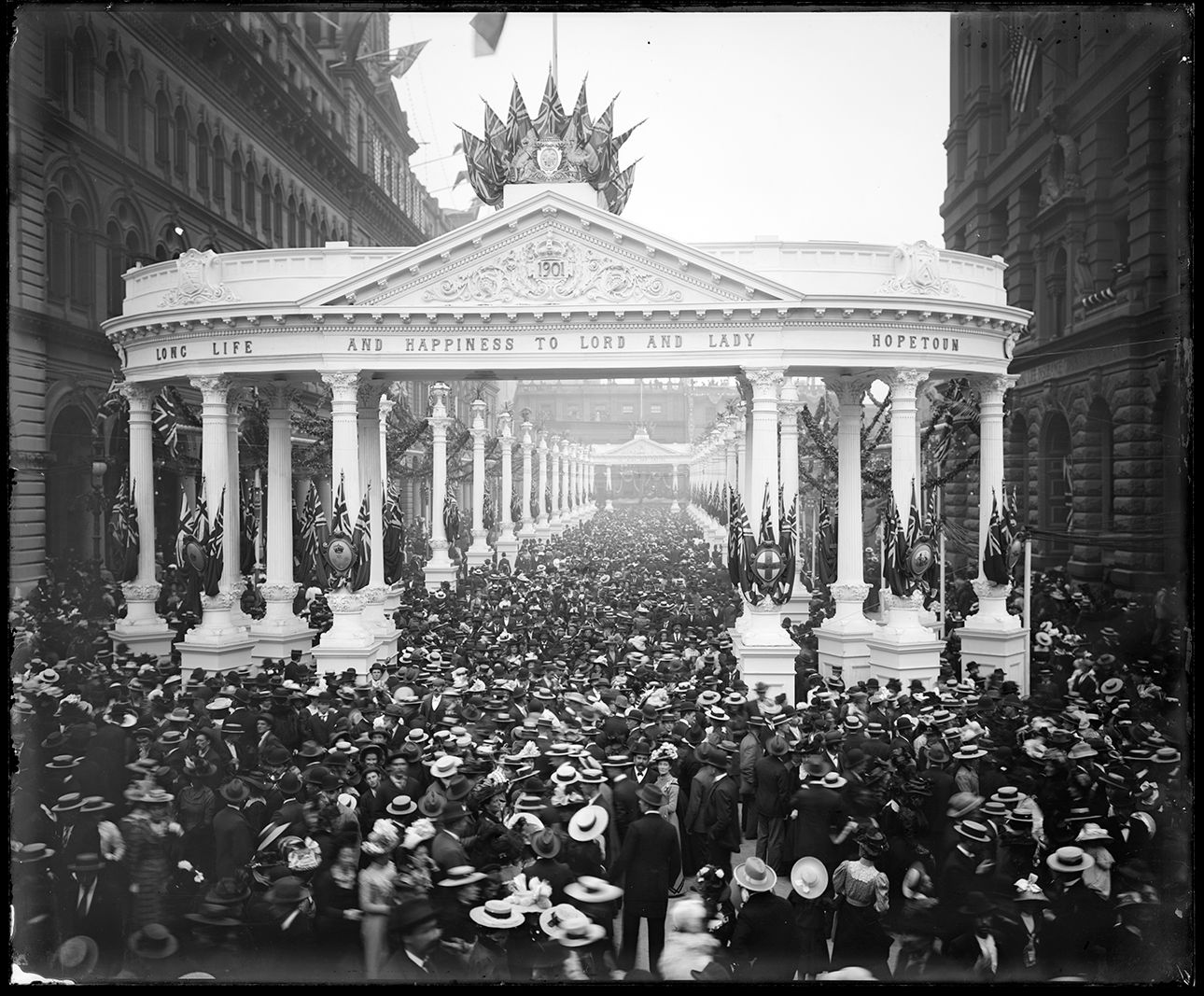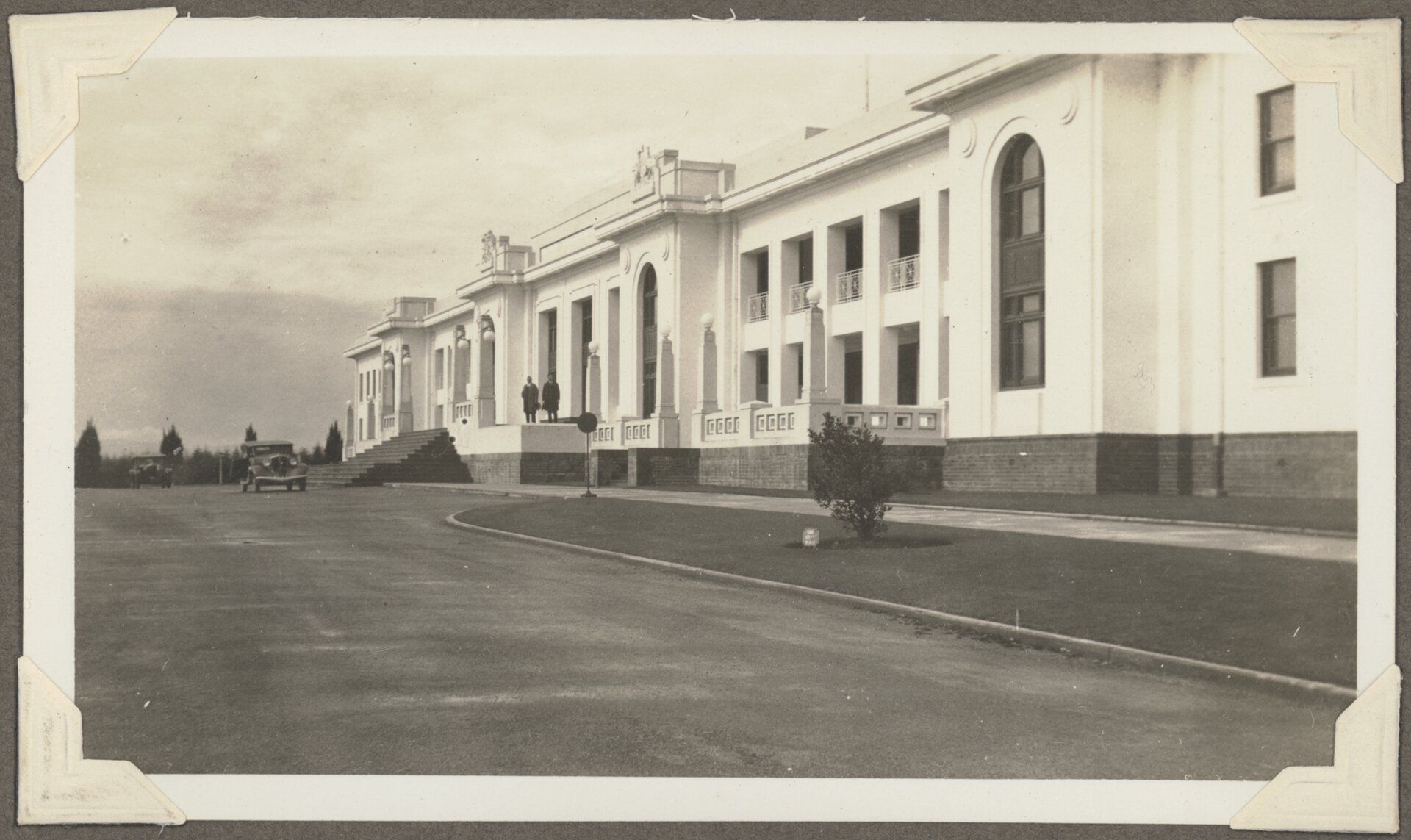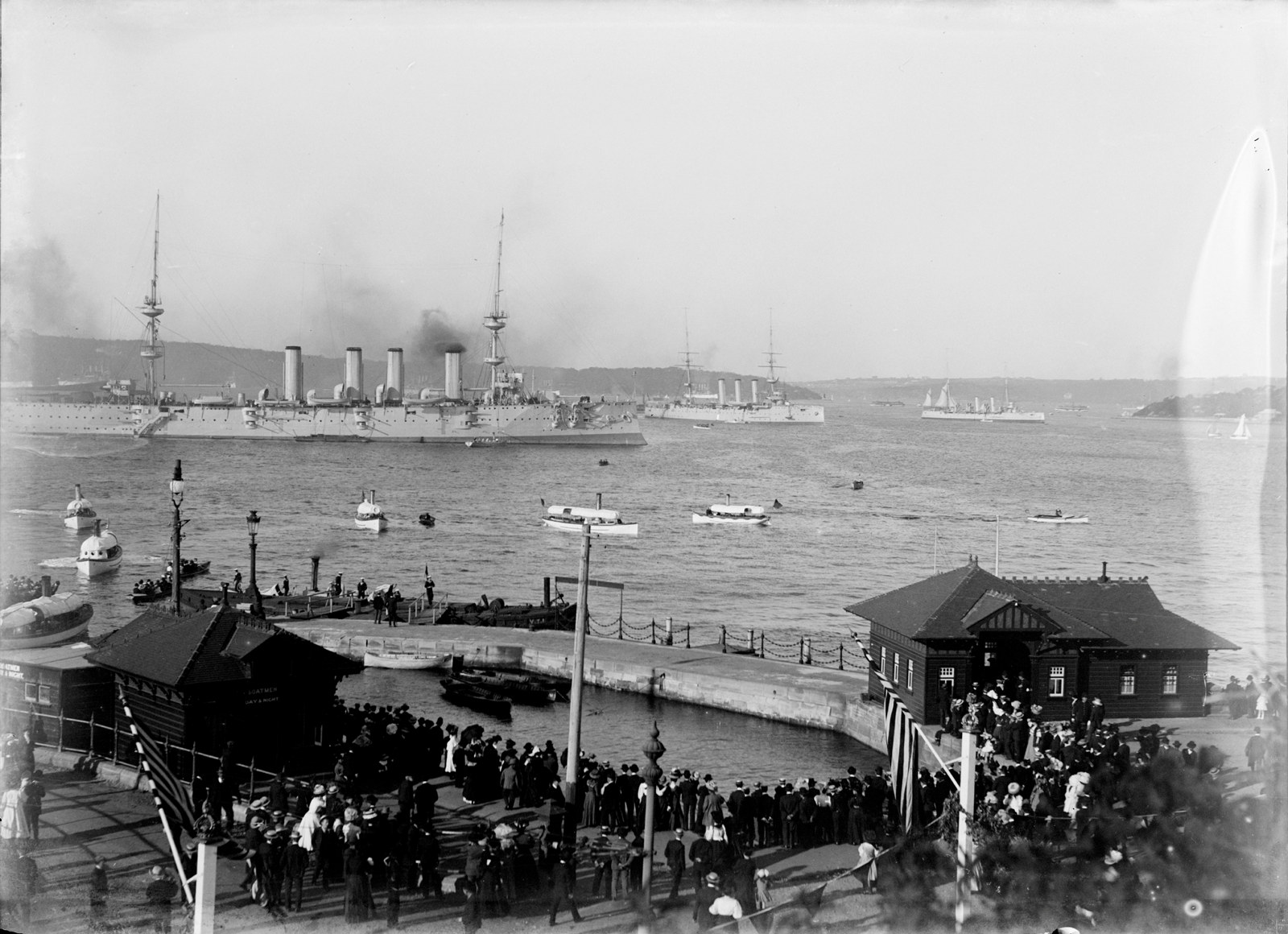Celebrating federation
The Commonwealth of Australia came into being on Tuesday 1 January 1901 and the Federation Pavilion in Sydney’s Centennial Park, which had been designed by Walter Vernon, New South Wales Government Architect, was the focus of the inauguration ceremonies.
1901 celebrations
At 10.30am starting at the Domain a procession comprising military bands, troops, police, firefighters, stockmen, heads of church and synagogue, representatives of the University of Sydney, foreign governments, trade unions and government officials1 set out. It followed a five mile route through the streets of Sydney which were decorated with triumphal arches (erected by various citizens’ committees), flags and bunting and was watched by large crowds.
The formal ceremony began at 12.30pm with prayers, the proclamation of the Commonwealth of Australia and the Swearing-in of the Governor General, the Earl of Hopetoun, and the federal ministers, including Edmund Barton as interim Prime Minister.
The Federation Pavilion was surrounded by an enclosure containing seats for 7,500 invited guests. There was also an enclosure for members of the press and photographers. Beyond this was the area for the military portion of the procession and, further beyond this, enclosures for 10,000 school children, 1,000 chorus and 400 choir and members of the general public.
That evening a State Banquet was held at the Sydney Town Hall. A cycling carnival was also held that night at the Sydney Cricket Ground. This was the beginning of 8 days of celebrations from 1 to 8 January 1901 which included church services, military displays, sporting carnivals, concerts, banquets, fireworks and illuminations. On 8 January a special train was provided to convey interstate and overseas guests to a commercial and municipal picnic which was held at Berry on the South Coast. Later that month Queen Victoria died, on 22 January 1901. Had Queen Victoria died prior to the Proclamation of the Commonwealth of Australia her death may have affected the transition of the Australian colonies to nationhood. Much correspondence from this time in our collection is black bordered as a sign of official mourning.
The Duke and Duchess of Cornwall and York visited in May 1901 to open the first Commonwealth Parliament (in Melbourne), and toured the State, travelling from Albury to Jennings (near Glen Innes) in May and June 1901. This gave the people of New South Wales another opportunity to celebrate Federation.
Related research guides

Federation of Australia - Part 1: 1840-1879
The process to federate the six Australian colonies into the Commonwealth of Australia took over fifty years from its beginnings in the 1840s

Federation of Australia - Part 2: 1880-1900
The 1880s proved to be 'the turning point at which the 'federal idea' found in all the schemes of the previous forty years would be transformed into the Federation movement'

Federation of Australia - Part 3: 1901-1914
The Commonwealth of Australia came into being on Tuesday 1 January 1901. The colonies became States and the transfer of powers, functions and property to the Commonwealth Government began
1951 celebrations
Federation was again celebrated on its 50th Anniversary in 1951. The Commonwealth Jubilee Celebrations of Federation in 1951 were initiated by the Commonwealth Government in cooperation with the various State governments.
In New South Wales there were State-wide celebrations with sporting, cultural and social events and the participation of schools was actively encouraged. Schools all over the State from Broken Hill to Crookwell marked the occasion. In Sydney celebrations included a ceremony in Centennial Park on 1 January 1951 and on 29 January a Cavalcade of Jubilee through the streets of Sydney with a Venetian Carnival and fireworks display at night.
Federation celebration records in the State Archives Collection
Notes
1. Irving, ed., op.cit., p.383.
Published on
State Archives Collection
Browse all
Canberra – the federal capital contest
This record series from the State Archives Collection sheds light on the proud efforts a number of towns, villages and other areas took to present their submissions to become the capital of the new Commonwealth

Sir Douglas Mawson: blizzards & bureaucracy
The Australasian Antarctic Expedition 1911-14 provided the world with more than a truly heroic tale of survival against the odds. It left the legacy of a vast collection of valuable scientific data and specimens in the areas of geology, cartology, biology, meteorology and geo magnetism

The Great White Fleet, 1908
On 20 August 1908 a round the world peace mission by the American fleet arrived in Port Jackson and marked the start of Fleet Week, a week-long celebration of events, parades and parties

Threads in the archives
Non-paper materials are not common in the State Archives Collection and the wonderful details, colours and textures captured in these items are a beautiful sight to see